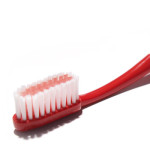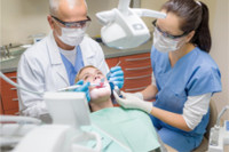 Patients want a dentist who is as thorough as possible in providing dental care. Dr. Stephen Muecke, along with his associates and hygienist pride themselves in following the ADA guidelines in caring for both new and existing patients. Each individual is provided with the most comprehensive dental exams available. The exam is performed using a stringent examination procedure combined with radiography.
Patients want a dentist who is as thorough as possible in providing dental care. Dr. Stephen Muecke, along with his associates and hygienist pride themselves in following the ADA guidelines in caring for both new and existing patients. Each individual is provided with the most comprehensive dental exams available. The exam is performed using a stringent examination procedure combined with radiography.
ADA recommendations include a comprehensive dental exams for patients new to the practice. In addition, established patients should have the comprehensive exam every three years. According to the ADA the comprehensive oral exam included an extensive evaluation and recording of all intraoral, extraoral and soft tissues.
Between the comprehensive exams, established patients should have periodic oral exams that help to determine changes in health or dental status since the last exam. The comprehensive exam forms the foundation for the routine or periodic oral exam and includes much more than a simple cleaning.
Dental Exams from an Atlanta-based Dentist
Oral health provides several clues to overall health. Medical conditions are often discovered in a comprehensive dental exam before appearing elsewhere in the patient’s body. Examples include:
- Diabetes, especially undiagnosed or poorly controlled diabetes
- Leukemia or other systemic disorders
- Blood pressure problems (Patients with high blood pressure are referred to their physician)
- Cardiovascular problems (Gum and bone disease increase the risk of heart attack)
- Oral Cancer (Each patient receives an oral cancer exam)
- Immune system abnormalities
- Sinus problems by ruling out dental problems as the source of pain.
Using the comprehensive the dental team and patient devise a strategy for comfort and long-term health.
Dental X-Rays
X-rays, properly known as Dental Radiographs can serve many purposes, including the location of hidden dental structures, benign or malignant masses, areas of bone loss and cavities.
The radiographic image is formed using a controlled amount of x-ray radiation to penetrate the mouth at different levels which all depends on the anatomical densities before striking the film or a sensor. Less radiation is able to penetrate to the film through the teeth giving them a lighter appearance. Dental cavities, infections and other changes in bone density or the periodontal ligament will appear darker as they allow x-ray greater penetration. Fillings, crowns and other dental restorations may have a light or dark appearance, depending on the density of the material used to create the restoration.
According to the ADA website, the dosage of X-ray radiation the patient receives is typically small (0.150 mSv is all that is required for a full mouth series), and no more than a patient would receive in a few days exposure to background radiation exposure or while making a cross-country flight in an airplane but it is concentrated and aimed at a smaller area of the body. Use of a lead apron, lead shield or a lead thyroid collar can further reduce any incidental exposure to the body. Using digital technology instead of film can reduce the exposure significantly. Atlanta-Smiles uses digital technology to improve safety for the family or patients as well as the staff.
Once the image is formed by exposure to x-rays, it must be developed. Traditionally film was developed using chemicals in a darkroom to prevent destroying the image with normal light. The process was time-consuming and a simple mistake in the process, an incorrect exposure or other mistake could make retakes necessary. This exposed the patient to additional radiation from the x-rays. Digital x-rays use an electronic sensor to replace traditional film address many of these issues and are seeing widespread use in dentistry with the development of technology. They reduce the radiation needed and reduce the time for processing, often allowing an instantaneous view on the computer. Historically, digital sensors were costly and had poor resolution. Newer sensors are helping to overcome problems of the past while improving the ability to perform dental exams.





